John Hurrell – 26 August, 2010
So, as with a lot of the work Leigh has made in recent years there is a tension between looking through the surface of the Sellotape picture plane and the perspectival elements of the original photograph within it. You have to look closely to see the Sellotape tips stuck to the paper on each side and the narrow slivers of white paper peeking through between the horizontal ‘floor boards' to disrupt the image.
Esther Leigh is highly regarded for her enigmatic images (mysterious in the sense of how they are made, as well as their mental associations) and organic, vaguely geological, marks. She is a sculptor and painter who seems to have a printmaker’s sensibility attracted to intricate detail and microcosms.
She is also a photographer in the way that Ed Ruscha, for example, or Christopher Williams, are - an employer of professionals for whom she sets up images to be documented. These usually involve explorations of translucency, edge definition, reflection and opacity. This show of eleven unframed works presents a mixture of subtly gorgeous colour photographs (from a distance they seem black and white) and drawings made with photocopies and ‘invisible’ Sellotape.
The photographs are of three types: Chamber features chunks of polyfilla cast as rocks placed on reflective glass; Verge is of milky translucent polyester sheets cut into craggy shapes sitting on reflective glass and leaning against polyfilla chunks that can be seem through them; Drop-Scene has the polyester forms described above worked on with graphite powder and enamel. These beautifully marked polyester sheets, initially exhibited in the late-nineties, now are cut into iceberg forms and photographed.
Chamber has a delicate green shimmering line underneath the base of the white rocklike forms and the Verge works have a rosy blush in the grey pool-like surface the forms are sitting on. (The images with this article don’t do the photographs justice.)
Leigh’s Idle Fleet drawings look like the rock forms placed on glossily varnished floorboards. The resemblance seems to be the basis for a pun with the horizontal strips of Sellotape stuck to the paper, each strip holding a slice of a photocopy made from a photograph. Within the strips are added white dots and specks on the photocopy that allude to crumbled ice and also air bubbles that you find trapped within hastily fastened Sellotape.
So, as with a lot of the work Leigh has made in recent years there is a tension between looking through the surface of the Sellotape picture plane and the perspectival elements of the original photograph within it. You have to look closely to see the Sellotape tips stuck to the paper on each side and the narrow slivers of white paper peeking through between the horizontal ‘boards’ to disrupt the image.
That tension intrigues because the floorboard allusion causes the photographic space to be unstable and appear to flip up. That suggested tilting, coupled with the sense of looking down and across at the distant forms, brings an unusual dimension to these collage-based drawings.
The Sellotape itself is intended by the artist to decay, and so aid the collapse of the drawing in a slow moving critique of Romanticism and its escapist poetic forms, but that is as much a construction as the values which it is repudiating. A flip-flop double-jointed brain exercise underpining these openly unstable constructions.
John Hurrell
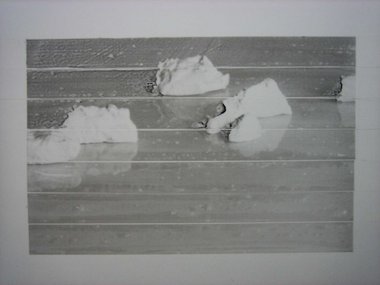
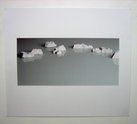
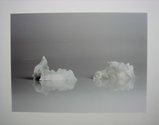
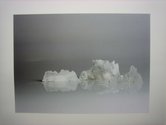
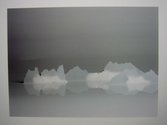
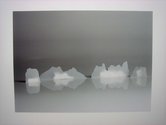
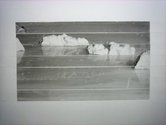
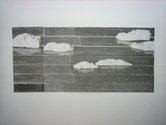
 Advertising in this column
Advertising in this column Two Rooms presents a program of residencies and projects
Two Rooms presents a program of residencies and projects



This Discussion has 0 comments.
Comment
Participate
Register to Participate.
Sign in
Sign in to an existing account.